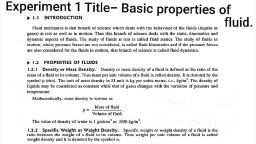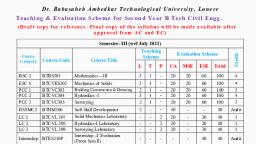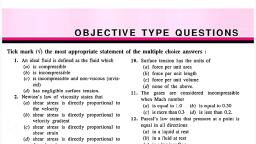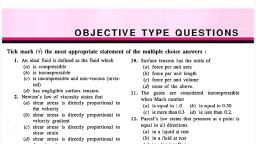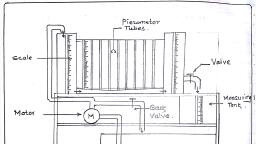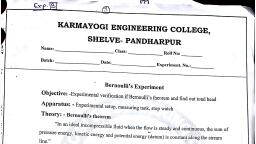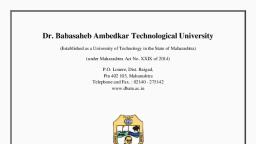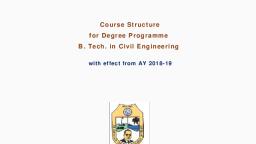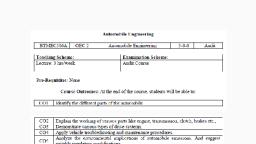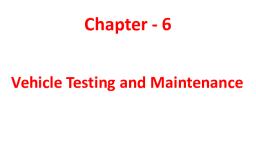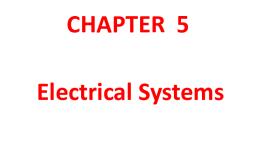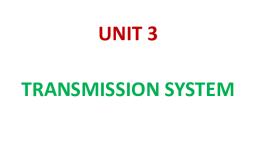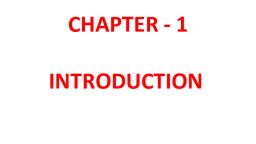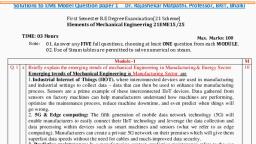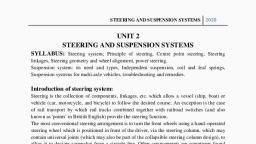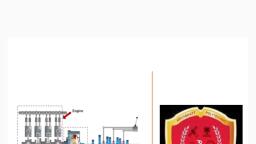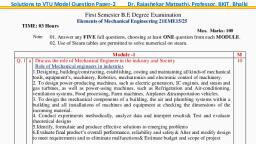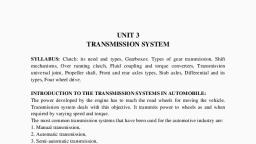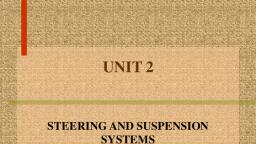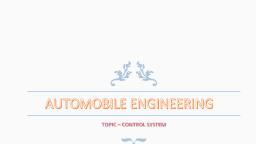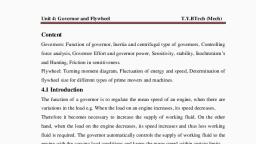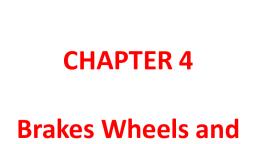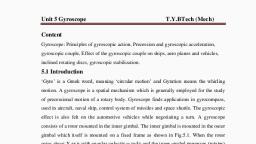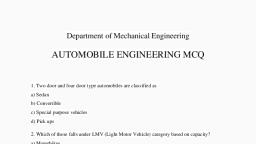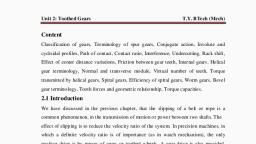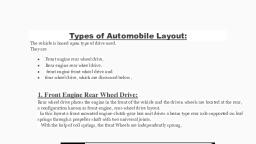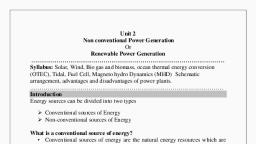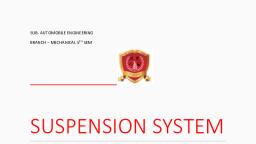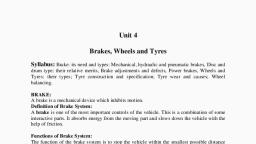Page 1 :
Introduction 2020, UNIT 1, INTRODUCTION, SYLLABUS: Vehicle Specifications, Classifications, Chassis layout, Frame, Main, components of automobile and articulated vehicles; Engine-cylinder arrangements, Power, requirements, Tractive efforts and vehicle performance curves., , INTRODUCTION OF AUTOMOBILE OR VEHICLE:, , , , , , , An Automobile is a self propelled vehicle which contains the power source for its, propulsion and is used for carrying passengers and goods on the ground, such as car, bus,, trucks, etc.,,, A vehicle producing power within itself for its propulsion is known as a Self propelled, vehicle. E.g. Moped, Scooter, motorcycle, Car, jeep, truck, tractor, ships, aircrafts, rocket, etc., Different from Aeronautical vehicles (planes, helicopters, rockets) & marine vehicles, (ships, boats, submarines), , VEHICLE SPECIFICATIONS:, Engine displacement, Engine displacement means the combined volume of the cylinders in the engine (measured in, cubic centimeters or cc). To put things in perspective, imagine a water container with a volume, of 499.5 cc which represents a 1 engine cylinder. Now, add 3 more containers of the same, volume. You’ll then have a combined volume of 1,988 cc., That equates to a 4-cylinder engine with a displacement of 1,998 cc, which in most spec sheets is, rounded off as 2.0L. Best examples of this are the Mazda 3 Hatchback SkyActiv R which has a, 1,998 cc (or 2.0L) engine., Horsepower / Torque, Horsepower is the amount of power generated by the engine as it turns air and fuel into energy., Torque, on the other hand, is the amount of force the engine is capable of exerting in order to, pull the vehicle forward. Local car manufacturers often use ‘hp’ and ‘Nm’ to represent the, vehicle’s horsepower and torque rating., Transmission, The transmission is a component that distributes engine power and torque to the drive wheels so, the car can move. Nowadays, there are 3 major types of transmissions; manual, automatic, and, the continuous variable transmission or CVT. Manual gives drivers the full control of changing, KECSP | Mr. S. S. Gaikwad, , 1
Page 2 :
Introduction 2020, gears, while the automatic provides a more relaxed and convenient driving experience by doing, away with the hands-on operation of the clutch and gear shifting., The CVT, on the other hand, is just like an automatic but it offers a smoother driving feel as it no, longer has to change gears in order to increase or decrease speed. Think of it as having a single, gear that can adjust itself to low, medium, or high speeds. The latest Mitsubishi Mirage GLS, CVT is a good example of a car that has this kind of transmission., Power train, This refers to the drive wheels or the wheels that are driven by the engine and transmission. The, most common power trains are; front-wheel-drive (FWD), rear-wheel-drive (RWD), and 4wheel-drive (4WD)., Small cars like the Honda Brio use the FWD power train to align with its subcompact, dimensions, while high-performance cars or those with bigger bodies like the Jaguar FType and the all-new Toyota Innova use RWD for better handling, stability on heavy loads, or, both. 4WD vehicles like the Chevrolet Colorado 2.8 LTZ 4x4 Tracker Pro pickup do well on, uneven or varying road surfaces because power and torque are transmitted to all 4 wheels,, improving grip in the process, Dimension, An automobile’s dimensions consist of its body’s length, width, and height. It also includes the, wheelbase (the length of the lower body between the front and rear wheels), ground clearance, (the height or measurement of the gap between the vehicle’s underbody and the road surface),, trunk capacity, and maximum cargo (the volume by which the vehicle can carry stuff in the cabin, when its rear seats are folded down)., ABS / EBD, ABS stands for Anti-lock Braking System. It’s a device that prevents the wheels from, completely locking, thus preventing the tires from skidding. It allows the driver to steer the car, more effectively while braking to evade a collision. EBD, on the other hand, means Electronic, Brake-force Distribution. It automatically adjusts and evens out the braking power to the front, and the back wheels, depending on the situation and load carried by the vehicle (i.e. passengers, and luggage)., Cruise Control, The basic function of the cruise control is to allow the driver to program the vehicle to maintain a, certain speed without stepping on the accelerator pedal. Some cars step it up a notch with an, Adaptive Cruise Control. This uses a system of radars and/or cameras to monitor the traffic, ahead and safety adjust the vehicle’s speed accordingly., , KECSP | Mr. S. S. Gaikwad, , 2
Page 3 :
Introduction 2020, Infotainment system, An infotainment system consists of a touch screen LCD and a significantly-reduced number of, physical control buttons. Its function ranges from playing music to movies, displaying vehicle, information to a live feed from the rear view camera, and even displaying electronic road maps, with GPS navigation., Some systems even have connectivity features that allow users to go online or make hands-free, phone calls., It pays to know at least the basic terminologies car manufacturers use to describe their products., Not only will you be able to gain additional knowledge, you’ll also save yourself from the, burden of getting confused as to which car fits you best or satisfies your liking. We hope that this, simple guide will help you., , VEHICLE CLASSIFICATIONS (TYPES OF AUTOMOBILE):, The automobiles are classified by the following ways,, 1. On the Basis of Load:, Heavy transport vehicle (HTV) or heavy motor vehicle (HMV),, Light transport vehicle (LTV), Light motor vehicle (LMV),, 2. On the Basis of Wheels:, Two wheeler vehicle, for example: Scooter, motorcycle, scooty, etc., Three wheeler vehicle, for example : Auto rickshaw,, Three wheeler scooter for handicaps and tempo, etc., Four wheeler vehicle, for example: Car, jeep, trucks, buses, etc., Six wheeler vehicle, for example: Big trucks with two gear axles., 3. On the basis of Fuel Used:, Petrol vehicle, e.g. motorcycle, scooter, cars, etc., Diesel vehicle, e.g. trucks, buses, etc., Electric vehicle which use battery to drive., Steam vehicle, e.g. an engine which uses steam engine., Gas vehicle, e.g. LPG and CNG vehicles, where LPG is liquefied, 4. On the basis of body style:, Sedan Hatchback car., Coupe car Station wagon Convertible., Van Special purpose vehicle, e.g. ambulance, milk van, etc., 5. On the basis of Transmission:, Conventional vehicles with manual transmission, e.g. car with 5 gears., Semi-automatic, Automatic: In automatic transmission, gears are not required to be changed manually., KECSP | Mr. S. S. Gaikwad, , 3
Page 4 :
Introduction 2020, 6. On the basis of Drive:, Left hand drive, Right hand drive, 7. On the basis of Driving Axle, Front wheel drive, Rear wheel drive, All wheel drive, 8. Position of Engine:, Engine in Front - Most of the vehicles have engine in the front. Example: most of the, cars,, Engine in the Rear Side Very few vehicles have engine located in the rear., Example: Nano car., 9. Based on purpose, 1. Passenger vehicles – car, bus, motorcycle, 2. Goods vehicles – lorry, truck, pick up, 10. Based on make, 1. Maruti Suzuki 2. Hindustan motors, 3. Tata motors 4. Mahindra & Mahindra, 5. TVs motors 6. Hero motocorp, 7. Ashok Leyland 8. Eicher motors, 9. Force motors 10. Bajaj auto ltd, 11. Royal Enfield, 12. Volvo, Volkswagen, merc Benz, bmw, caterpillar, Bentley, Audi etc., , CHASSIS LAYOUT:, The chassis is formed by the frame with the frame side members and cross members. The frame, is usually made of box, tubular and channel members that are welded or riveted together. In, addition to this, it comprises of the springs with the axles and wheels, the steering system and the, brakes, the fuel tank, the exhaust system, the radiator, the battery and other accessories. Along, with this the frame supports the body, Chassis is a French term and was initially used to denote the frame parts or Basic Structure of the, vehicle. It is the back bone of the vehicle. A vehicle without body is called Chassis. The, components of the vehicle like Power plant, Transmission System, Axles, Wheels and Tyres,, Suspension, Controlling Systems like Braking, Steering etc., and also electrical system parts are, mounted on the Chassis frame. It is the main mounting for all the components including the, body. So it is also called as Carrying Unit. Layout of Chassis and its main Components:, An automobile is made up of mainly two units, these are Chassis and Body., “Frame” + “Base components” = “Chassis”, “Chassis” + “Body” = “Vehicle”, KECSP | Mr. S. S. Gaikwad, , 4
Page 5 :
Introduction 2020, , The following main components of the Chassis are:, 1. Frame: it is made up of long two members called side members riveted together with the help, of number of cross members., 2. Engine or Power plant: It provides the source of power, 3. Clutch: It connects and disconnects the power from the engine fly wheel to the transmission, system., 4. Gear Box, 5. U Joint, 6. Propeller Shaft, 7. Differential, , FRAME:, Functions of the chassis frame:, 1. To carry load of the passengers or goods carried in the body., 2. To support the load of the body, engine, gear box etc.,, 3. To withstand the forces caused due to the sudden braking or acceleration, 4. To withstand the stresses caused due to the bad road condition., 5. To withstand centrifugal force while cornering, KECSP | Mr. S. S. Gaikwad, , 5
Page 6 :
Introduction 2020, TYPES OF CHASSIS FRAMES:, There are three types of frames:, 1. Conventional frame, 2. Integral frame, 3. Semi-integral frame, 1. Conventional frame: It has two long side members and 5 to 6 cross members joined together, with the help of rivets and bolts. The frame sections are used generally., a. Channel Section - Good resistance to bending, b. Tabular Section - Good resistance to Torsion, c. Box Section - Good resistance to both bending and Torsion, 2. Integral Frame: This frame is used now a day in most of the cars. There is no frame and all the, assembly units are attached to the body. All the functions of the frame carried out by the body, itself. Due to elimination of long frame it is cheaper and due to less weight most economical, also. Only disadvantage is repairing is difficult., 3. Semi - Integral Frame: In some vehicles half frame is fixed in the front end on which engine, gear box and front suspension is mounted. It has the advantage when the vehicle is met with, accident the front frame can be taken easily to replace the damaged chassis frame. This type of, frame is used in FIAT cars and some of the European and American cars., VARIOUS LOADS ACTING ON THE FRAME:, Various loads acting on the frame are:, 1. Short duration Load - While crossing a broken patch., 2. Momentary duration Load - While taking a curve., 3. Impact Loads - Due to the collision of the vehicle., 4. Inertia Load - While applying brake., 5. Static Loads - Loads due to chassis parts., 6. Over Loads - Beyond Design capacity, , BODY:, Body is the superstructure of the vehicle and it is bolted to the chassis., Types;, Car,, Truck,, Tractor,, Delivery van,, Jeep,, Bus, etc..,, , KECSP | Mr. S. S. Gaikwad, , 6
Page 7 :
Introduction 2020, , MAIN COMPONENTS OF AUTOMOBILE AND ARTICULATED VEHICLES:, The automobile can be considered to consist of five basic components:, (a) The Engine or Power Plant: It is source of power., (b) The Frame and Chassis: It supports the engine, wheels, body, braking system, steering, etc., (c) The transmission which transmits power from the engine to the car wheels. It consists of, clutch, transmission, shaft, axles and differential., (d) The body., (e) Accessories including light, air conditioner/hearer, stereo, wiper, etc., 1. Engine or power plant, The engine is the power plant of the vehicle. In general, internal combustion engine with petrol, or diesel fuel is used to run a vehicle. An engine may be either a two-stroke engine or a four, stroke engine., An engine consists of a cylinder, piston, valves, valve operating mechanism, carburetor (or MPFI, in modern cars), fan, fuel feed pump and oil pump, etc. Besides this, an engine requires ignition, system for burning fuel in the engine cylinder., , KECSP | Mr. S. S. Gaikwad, , 7
Page 8 :
Introduction 2020, 2. Chassis and frame, The chassis is formed by the frame with the frame side members and cross members. The frame, is usually made of box, tubular and channel members that are welded or riveted together. In, addition to this, it comprises of the springs with the axles and wheels, the steering system and the, brakes, the fuel tank, the exhaust system, the radiator, the battery and other accessories. Along, with this the frame supports the body, 3. Transmission System (Clutch and Gear Box), The power developed by the engine is transferred to the wheels by transmission system., Transmission system must do three jobs:, (a) It must provide varying gear ratios. Number of gear ratios is equal to number of gears in a, vehicle., (b) It must provide a reverse gear for moving vehicle in reverse direction., (c) It must provide a neutral or disconnecting arrangement so that the engine can be uncoupled, from the wheels of the vehicle. In a conventional transmission system, there is a clutch, a, manually operated transmission (gear box), a propeller shaft and a differential or final drive., 4. Clutch, The purpose of the clutch is to allow the driver to couple or decouple the engine and, transmission. When clutch is in engaged position, the engine power flows to the transmission, through it (clutch). When gears are to be changed while vehicle is running, the clutch permits, temporary decoupling of engine and wheels so that gears can be shifted. In a scooter, the clutch, is operated by hand where as in a car the clutch is operated by foot. It is necessary to interrupt, the flow of power before gears are changed. Without a clutch, it will be very difficult, 5. Final Drive, Final drive is the last stage in transferring power from engine to wheels. It reduces the speed of, the propeller shaft (drive shaft) to that of wheels. It also turns the drive of the propeller shaft by, an angle of 90o to drive the wheels. The propeller shaft has a small bevel pinion which meshes, with crown wheel. The crown wheel gives rotary motion to rear axles. The size of crown wheel, in bigger than that of bevel pinion, therefore, the speed of rear axles (or crown wheel) in lower, than the speed of pinion. Final drive is of two types, i.e. chain type and gear type., 6. Braking System, Brakes are used to slow down or stop the vehicle. Hydraulic brakes are generally used in, automobiles, where brakes are applied by pressure on a fluid. Mechanical brakes are also used in, some vehicles. These brakes are operated by means of leavers, linkages, pedals, cams, etc. Hand, brake or parking brake is usually a mechanical brake. These are used for parking the vehicles on, sloppy surfaces and also in case of emergency., , KECSP | Mr. S. S. Gaikwad, , 8
Page 9 :
Introduction 2020, 7. Gear Box, Gear box contain gearing arrangement to get different speeds. Gears are used to get more than, one speed ratios. When both mating gears have same number of teeth, both will rotate at same, number speed. But when one gear has fewer teeth than other, the gear with less number of teeth, will rotate faster than larger gear. In a typical car, there may be six gears including one reverse, gear. First gear gives low speed but high torque. Higher gears give progressively increasing, speeds. Gears are engaged and disengaged by a shift lever., 8. Steering System, In front wheels can be turned to left and right by steering system so that the vehicle can be, steered. The steering wheel is placed in front of driver. It is mechanically linked to the wheels to, provide the steering control. The primary function of the steering system is to provide angular, motion to front wheels so that vehicle can negotiate a turn. It also provides directional stability to, vehicle when the vehicle, , ENGINE-CYLINDER ARRANGEMENTS:, Types of Automobile engines:, There are many different types of internal combustion engines. They can be classified by:, 1. Application. Automobile, truck, locomotive, light aircraft, marine, portable power system,, power generation, 2. Basic engine design. Reciprocating engines (in turn subdivided by arrangement of cylinders:, e.g., in-line, V, radial, opposed), rotary engines (Wankel and other geometries), 3. Working cycle. Four-stroke cycle: naturally aspirated (admitting atmospheric air),, supercharged (admitting precompressed fresh mixture), and turbo- charged (admitting fresh, mixture compressed in a compressor driven by an exhaust turbine), two-stroke cycle: crankcase, scavenged, supercharged, and turbocharged, 4. Valve or port design and location. Overhead (or I-head) valves, under head (or L-head) valves,, rotary valves, cross-scavenged porting (inlet and exhaust ports on opposite sides of cylinder at, one end), loop-scavenged porting (inlet and exhaust ports on same side of cylinder at one end),, through- or uniflow- scavenged (inlet and exhaust ports or valves at different ends of cylinder), 5. Fuel. Gasoline (or petrol), fuel oil (or diesel fuel), natural gas, liquid pet- roleum gas, alcohols, (methanol, ethanol), hydrogen, dual fuel, 6. Method of mixture preparation. Carburetion, fuel injection into the intake ports or intake, manifold, fuel injection into the engine cylinder, 7. Method of ignition. Spark ignition (in conventional engines where the mixture is uniform and, in stratified-charge engines where the mixture is non-uniform), compression ignition (in, conventional diesels, as well as ignition in gas engines by pilot injection of fuel oil), 8. Combustion chamber design. Open chamber (many designs: e.g., disc, wedge, hemisphere,, bowl-in-piston), divided chamber (small and large auxiliary chambers; many designs: e.g., swirl, chambers, pre chambers), KECSP | Mr. S. S. Gaikwad, , 9
Page 10 :
Introduction 2020, 9. Method of load control. Throttling of fuel and air flow together so mixture composition is, essentially unchanged, control of fuel flow alone, a combination of these, 10. Method of cooling. Water cooled, air cooled, un-cooled (other than by natural convection and, radiation), ARRANGEMENT OF CYLINDERS, Engines are also classified according to the arrangement of the cylinders (fig. 2-10): IN-LINE, with all cylinders cast in a straight line above the crankshaft; V-TYPE with two banks of, cylinders mounted in a V- shape above the crankshaft; HORIZONTAL OPPOSED with, cylinders arranged 180 degrees from other with opposing cylinders sharing a common crankshaft, journal; and RADIAL with the cylinders placed in a circle around the crankshaft, IN-LINE - In-line is a common arrangement for both automotive and truck applications. It is, commonly built in four- and six-cylinder configurations., V-TYPE - V-type is also a common arrangement for both automotive and truck applications. The, V-type engine in a six-cylinder configuration is suitable for front-wheel drive cars where the, engine is mounted transversely., In-line engine:, This is the most common in an automobile engine. This type of engine arrangement has only one, cylinder bank. i.e. all cylinders of engine arranged in linearly, and all of them transmit power to a, single crankshaft. Inline engine with four and six cylinders is popular in automotive industries., , Advantages inline engine, • Design of engine block simple, cheaper., • Running of four-cylinder inline engine is smoother than the one or two cylinder engines., • Inline engine design does not need heavy counterweights., Why inline engine arrangement not popular for high power cars?, • Because of simplicity, inline engine is popular in economy cars. However, it suffers, secondary, • Imbalance and causes minor vibration in the smaller engine. This vibration also increases, as, • The size and power of increases. For this reason, the powerful engine does not adopt, inline arrangement., KECSP | Mr. S. S. Gaikwad, , 10
Page 11 :
Introduction 2020, V engine: V engines have two cylinder banks and one crankshaft. It is literally the assembly of, two inline engine arrangement (appear to be in "V" shape). This arrangement reduces the overall, engine length, height and weight compared to the equivalent inline arrangement. Two cylinder, banks inclined at an angle to each other and also each of them inclined to crankshaft. The angle, between two cylinder banks is known as bank angle. In narrow bank angle V engines, cylinders, are combined into a single cylinder block. Engine with more than six cylinder usually adopts this, cylinder arrangement. Most high powered automobile use eight cylinder v engine (four engine is, in inline on each side of V)., , Radial Engine:, In a radial engine, the cylinders arranged in equally spaced around the one crankshaft. i.e. the, cylinders are arranged radially in a circle. Pistons of these cylinders are coupled to the same, crankshaft. The radial arrangement is widely used in large air crafts until gas turbine engines, became predominant. In air cooled aircraft engine with 3, 5, 7 or 9 cylinders are used radial, arrangement. For the higher capacity of engine multi-row radial engine is used., , KECSP | Mr. S. S. Gaikwad, , 11
Page 12 :
Introduction 2020, Opposed cylinder engine/ Flat engine/ Boxer engine:, In this type of arrangement two cylinder banks (or two inline-engines) in the same plane but, opposite side of the crankshaft. One of the advantages of an opposed cylinder engine is that it, inherently well balanced. The type of engine arrangement found application in small aircraft., , Opposed piston engine:, In this type of arrangement, single engine cylinder houses two piston and has no cylinder head., Each piston drives two separate crankshafts. The movement of piston made synchronized by, coupling this two crankshaft. The type engine usually working on the principle of two-stroke, engine. The advantages opposed piston includes, it get rid heavy cylinder head, and it is a well, balanced arrangement. The opposed piston engine is used in large diesel plants., , Delta type engine/ Napier Deltic engine:, It is a combination of three opposed piston engine. The piston of this engine is coupled to three, interlinked crankshafts., , KECSP | Mr. S. S. Gaikwad, , 12
Page 13 :
Introduction 2020, X engine:, This is a variation of V type with four banks of cylinder attached to the single crankshaft. This, twinned V block engine has four banks and appeared as X shape. X type arrangement is, extremely uncommon because of its complexity and weight., , H engine:, In this type two opposed cylinder type is connected to two separate but interconnected, crankshaft. It shows excellent mechanical balance., , U type engine:, In u type engine, two separate straight engine joined by using gears or chains. It appears in the, shape of U. This cylinder arrangement is uncommon as it is heavier than the similar V engine., , KECSP | Mr. S. S. Gaikwad, , 13
Page 14 :
Introduction 2020, W engine:, It is similar to V engine but it has three or four cylinder bank engine banks., , POWER REQUIREMENTS:, The motion of a vehicle moving on a road is resisted by aerodynamic forces, known as wind or, air resistance, and road resistance which is generally termed as rolling resistance. In addition to, these two types of resistances, the vehicle has to overcome grade resistance when it moves up on, a gradient, because the weight of the vehicle is to be lifted through a vertical distance. Hence, the, power required to propel a vehicle is proportional to the total resistance to its motion and the, speed., , TRACTIVE EFFORT (TE):, If the rear wheels of the vehicle in the figure are driven with no slip taking place between the, tires and the level road surface, the wheel force or the tractive effort (TE) is equal to the torque at, the driven wheels (Tw) divided by the rolling radius or effective radius (Rw), KECSP | Mr. S. S. Gaikwad, , 14
Page 15 :
Introduction 2020, , Maximum value of TE:, If the rear wheels have such a torque applied to them that they are on the point of slipping in the, plane of the wheel, then the value of adhesive force between tire and road surface has been, reached (φ WR), where φ is the coefficient of adhesion between tire and road surface, and WR is, the weight on the rear wheels. Under these conditions the engine torque has reached the, maximum useful value for the present set of conditions, as any increase would only result in slip, and lower acceleration. Static friction is higher than kinetic friction., , Traction and Tractive Effort, The force available at the contact between the drive wheel tyres and road is known as ‘tractive, effort’. The ability of the drive wheels to transmit this effort without slipping is known as, ‘traction’. Hence usable tractive effort never exceeds traction. The tractive effort relate to engine, power as follows., , KECSP | Mr. S. S. Gaikwad, , 15
Page 16 :
Introduction 2020, , When the tractive effort F>R, the total resistance on level road, the surplus tractive effort is, utilized for acceleration, hill climbing and draw-bar pull., , VEHICLE PERFORMANCE CURVES:, Road Performance Curves: Acceleration, Gradability and Drawbar Pull, Passenger car performance is based on acceleration, ability to go up a slope, top speed, fuel, economy, noise level, and durability. Transmission gearing is designed to provide maximum, acceleration at low speed by holding the driving wheel torque output at the point of impending, wheel spin. As wheel spin occurs, the acceleration decreases from the maximum. Also the gear is, designed for maximum fuel economy when the engine is developing 80% of its maximum torque, as the automobile is moving at a constant speed. This gives 20% additional torque for, acceleration. The power required to drive an automobile increases as the cube of the speed i.e. it, takes eight times the power to double the speed. When the power available matches the power, required to push the vehicle, the speed becomes constant. Excess power is required for, acceleration and hill climbing. Maximum speed is reached when there is no excess power, remaining. Figure 31.3 illustrates the variation of full-throttle power available at the wheels for, four gear ratios with road speed. A curve, showing the power required by vehicle at various road, speeds is also presented. At any speed, the difference of ordinates of power available and power, may be shared by all the three items as and when required. Power required by vehicle gives the, surplus power, which can be utilized either for acceleration or for drawbar pull or for hill, climbing. Or else the surplus, , KECSP | Mr. S. S. Gaikwad, , 16
Page 17 :
Introduction 2020, , Fig. 1 Road speed vs. power available at wheels., By using the formula given in section 1, the power available as indicated in Fig. 1 can be, converted into tractive effort. Hence tractive effort performance curves for four gear ratios can, be plotted against road speed as in Fig. 2. In this figure a road resistance curve is also presented., The difference between the ordinates of tractive effort and road resistance at any road speed, gives the surplus tractive effort, which is utilized for acceleration, drawbar pull and hill climbing., , Fig. 2 Road speed vs. tractive effort., Acceleration, When the vehicle is accelerated, its rotating parts are also accelerated depending upon their, moments of inertia and the gear ratio in the drive line. Due to this, weight of vehicle is increased, KECSP | Mr. S. S. Gaikwad, , 17
Page 18 :
Introduction 2020, from W to We. This increased weight, We, is called the ‘effective weight’ of the vehicle. When, surplus power, i.e. surplus tractive effort is fully utilized to acceleration, then, , Gradability, The maximum percentage grade, which a vehicle can negotiate with full rated condition, is, known as ‘gradability’. Hence,, , Drawbar Pull, When the excess power is fully utilized for pulling extra load attached to vehicle then,, Maximum drawbar pull = Tractive effort—Road resistance = (F— R)., Road resistance in this section is made up of rolling resistance and air resistance. Figures 1 and 2, show that maximum surplus power and hence maximum surplus tractive effort are provided at, very low speeds of the vehicle. Therefore, for acceleration from start, for climbing steeper, gradient and for large drawbar pull, first gear is best suited. Maximum road speed is achieved in, the gear when power available equals to power required (Fig. 1) and tractive effort becomes, equal to level road resistance (Fig. 2). If the vehicle is desired to run at a lower speed, the throttle, is adjusted accordingly so that the part throttle power available curve intersects the power, required curve at the desired road speed. This is shown in Fig. 1., , Example: The coefficient of rolling resistance for a truck weighing 62293.5 N is 0.0182 2 and, the coefficient of air resistance is 0.0276 in the formula R = KW + KqAV, N, where A is m of, frontal area and V the speed in km i hr. The transmission efficiency in top gear of6.2:1 is 90%, and that in the second gear of 15:1 is 80%. The frontal area is 5.574 m. If the truck has to have a, maximum speed of 88 km i hr in top gear calculate: (i) the engine B.P. required;, KECSP | Mr. S. S. Gaikwad, , 18
Page 19 :
Introduction 2020, (ii) The engine speed if the driving wheels have an effective diameter of 0.8125 ni; (Hi) the, maximum grade the truck can negotiate at the above engine speed in second gear; and, (iv) The maximum drawbar pull available on level at the above engine speed in second gear., , Example: Determine the gear ratios of a four speed gear box for a vehicle of weight 13341.6 N, powered by an engine giving 20.6 kW at 1800 r.p.m. The vehicle has a frontal area of 2.23 m and, has a wheel dia 0.71 m. The maximum gradient that the car has to negotiate is 1 in 4. The, tractive resistance may be taken as 50 N per 2240 N of the car. The wind resistance is given by, 0.03679 AV2, where A is the frontal area in m2 and V is the vehicle speed in km/hr. Assume that, KECSP | Mr. S. S. Gaikwad, , 19
Page 20 :
Introduction 2020, the transmission efficiency is 0.75 and that at top gear, the car is expected to go over a grade of 1, in 40. State any other assumptions you make., , KECSP | Mr. S. S. Gaikwad, , 20
